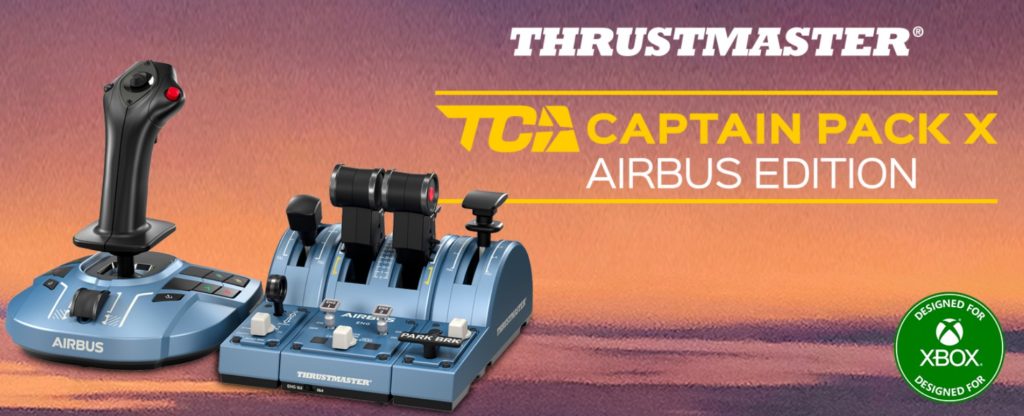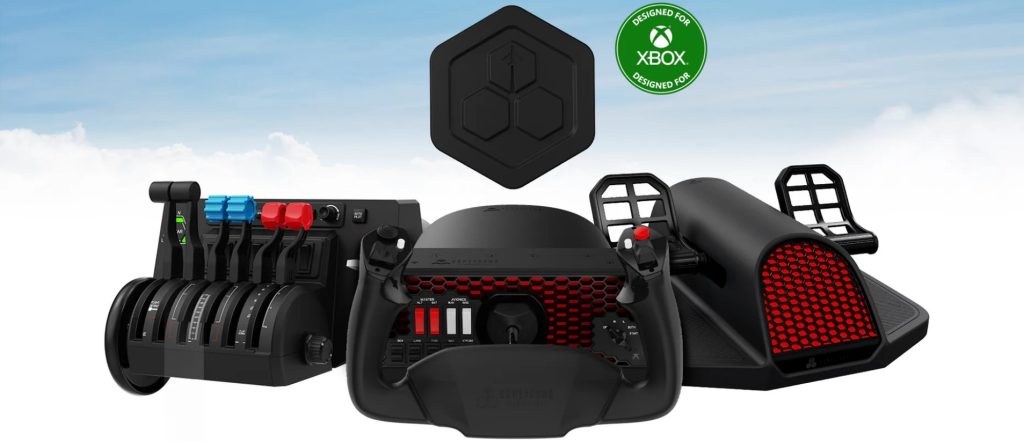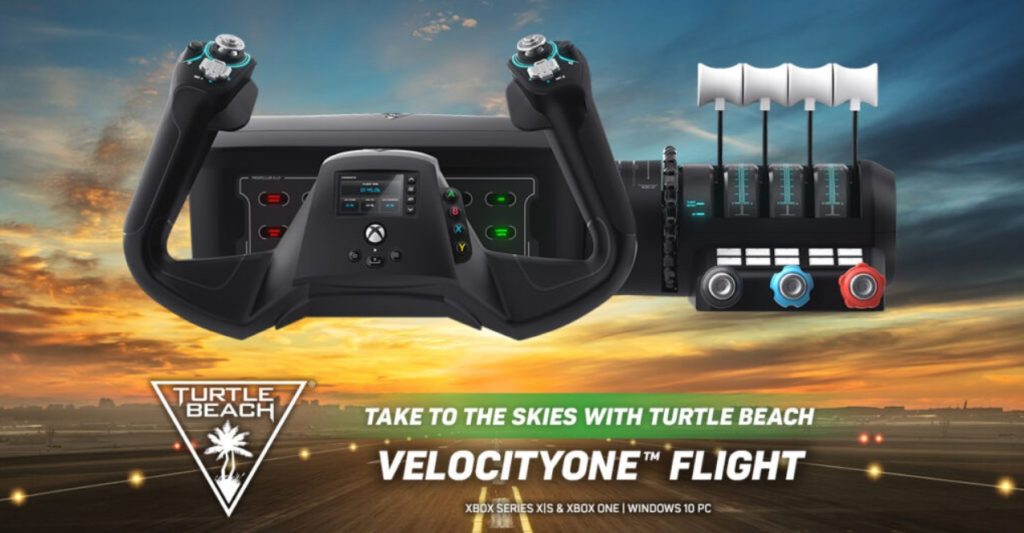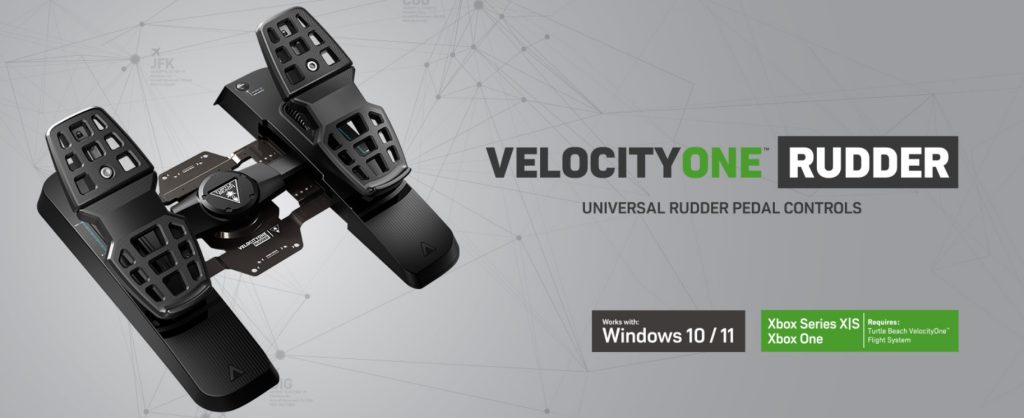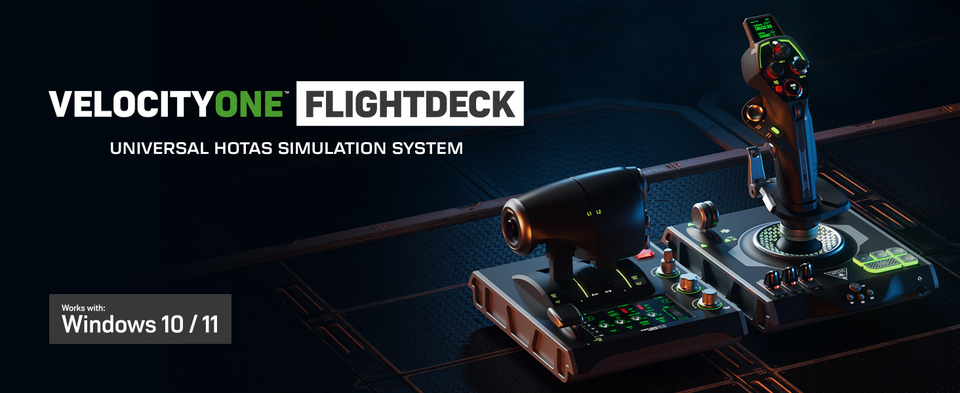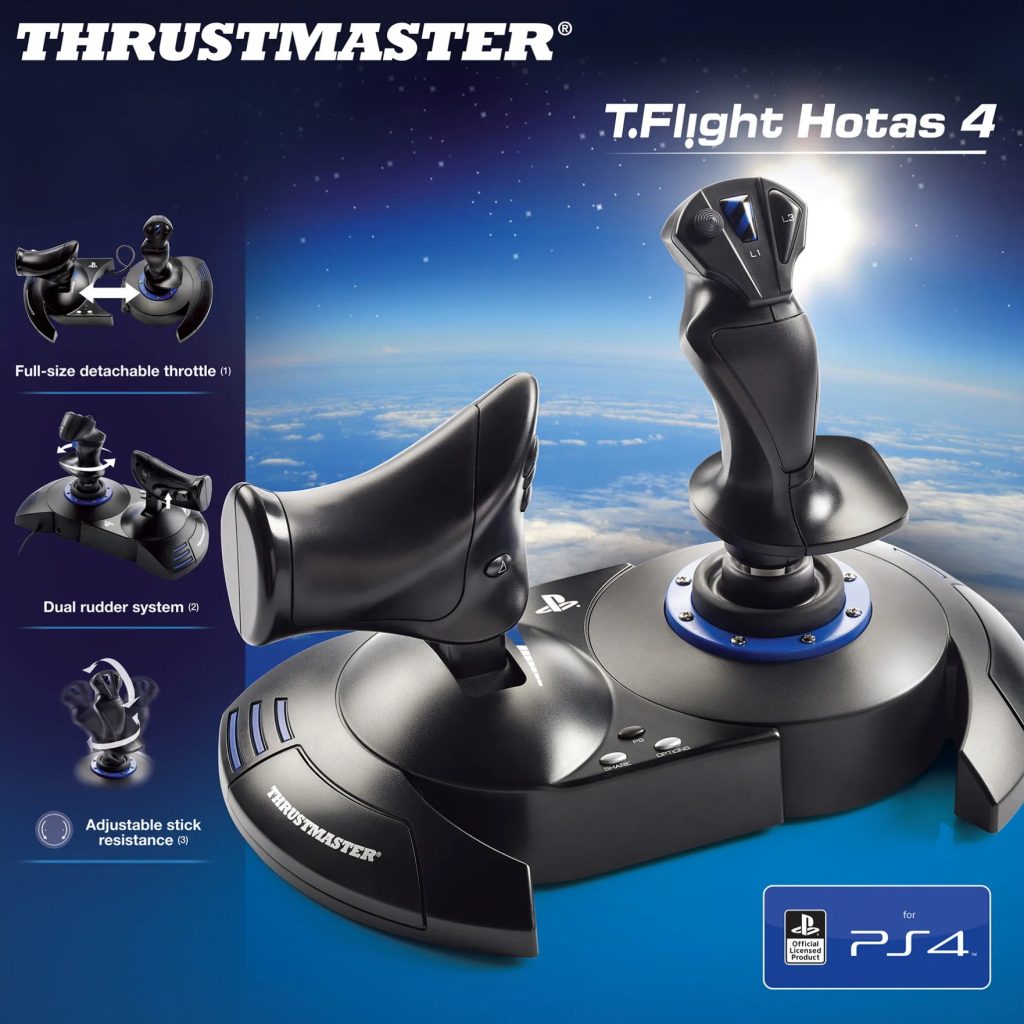As a professional pilot with thousands of hours in everything from light GA trainers to turbine twins, I’m constantly asked about home simulation gear. Flight simulation is an excellent way to stay sharp on procedures, flows, and mental math — but not all hardware translates equally well to the real cockpit.
The Turtle Beach VelocityOne Flightdeck (or simply “Flightdeck”) is a HOTAS (hands-on throttle and stick) system that promises premium build quality, hall-effect sensors, a touchscreen interface, and an impressive array of programmable controls. It’s positioned as a top-tier setup for Microsoft Flight Simulator, X-Plane, DCS World, and other sims. But how does it hold up when judged by real-world flying standards? Here’s my pilot’s-eye review.
First Impressions & Build
Out of the box, the Flightdeck feels substantial. The stick base and throttle unit have enough mass to stay put on a desk without immediately needing clamps — though for long-term use, I’d recommend securing them. The stick grip is comfortable, with a soft-touch coating and adjustable shaft height, which is a clever feature for pilots with different hand sizes.
The throttle unit is equally solid. The dual-lever design lets you split engines for multi-engine operations or lock them together for single-engine aircraft, which is great for simulating asymmetric thrust scenarios. Detents for idle, reverse, and afterburner can be adjusted in software, adding a realistic “gate” feel.
That said, there are some quirks. A few switches feel looser than I’d like for a premium unit, and the two-stage trigger lacks the crisp detent I’d expect. The OLED “HUD” on the stick and the touch display on the throttle are visually striking, but they can be finicky at certain viewing angles.
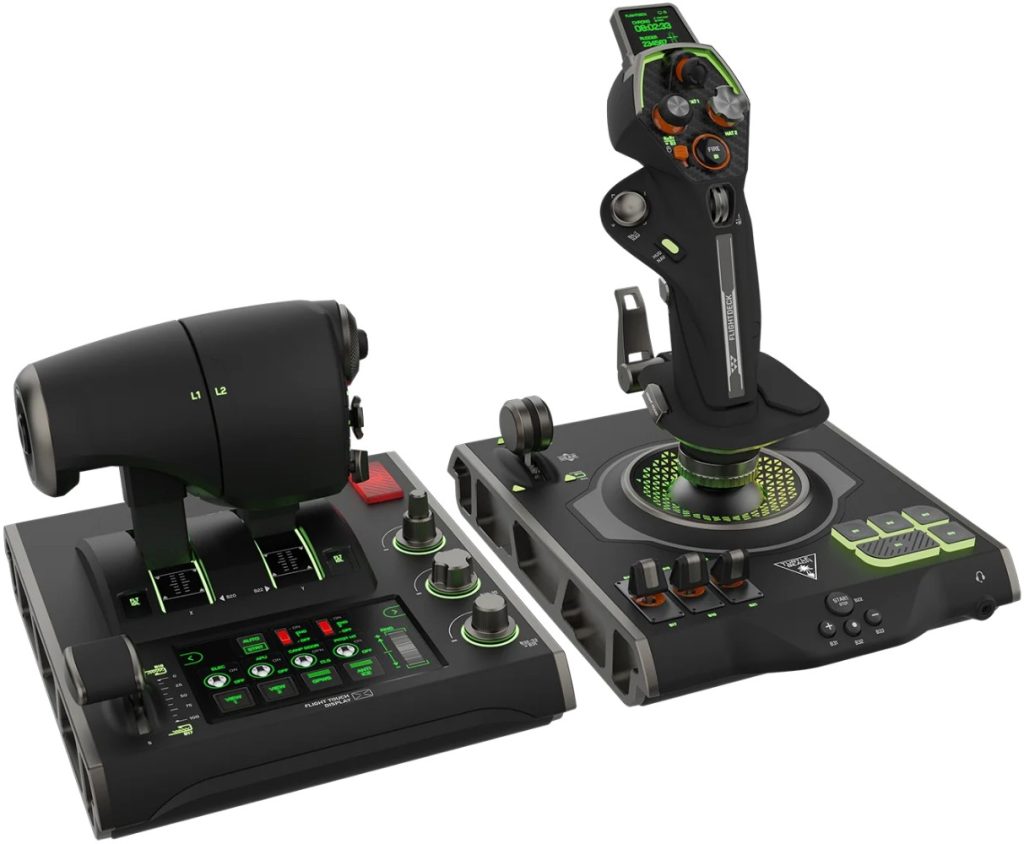

Ergonomics & Layout
Good ergonomics are crucial in both real cockpits and simulators. Here, Turtle Beach mostly gets it right.
The stick height adjustment lets you find a comfortable wrist angle, reducing fatigue. Most buttons and hat switches are within easy reach without repositioning your grip — important for flying by feel.
The throttle layout is a highlight. The travel is smooth, resistance is appropriate, and the levers feel robust. Having physical toggle switches, rotary knobs, and a trim wheel means you can map essential aircraft functions like flaps, landing gear, lights, and autopilot modes.
The Flight Touch Display is a mixed bag. On paper, 39 additional virtual buttons are a dream come true. In practice, tapping a touchscreen while flying an approach feels slower and less precise than flicking a physical switch by muscle memory. I found it useful for secondary tasks — radio setup, transponder codes, sim menus — but not something I’d rely on in a high-workload phase of flight.
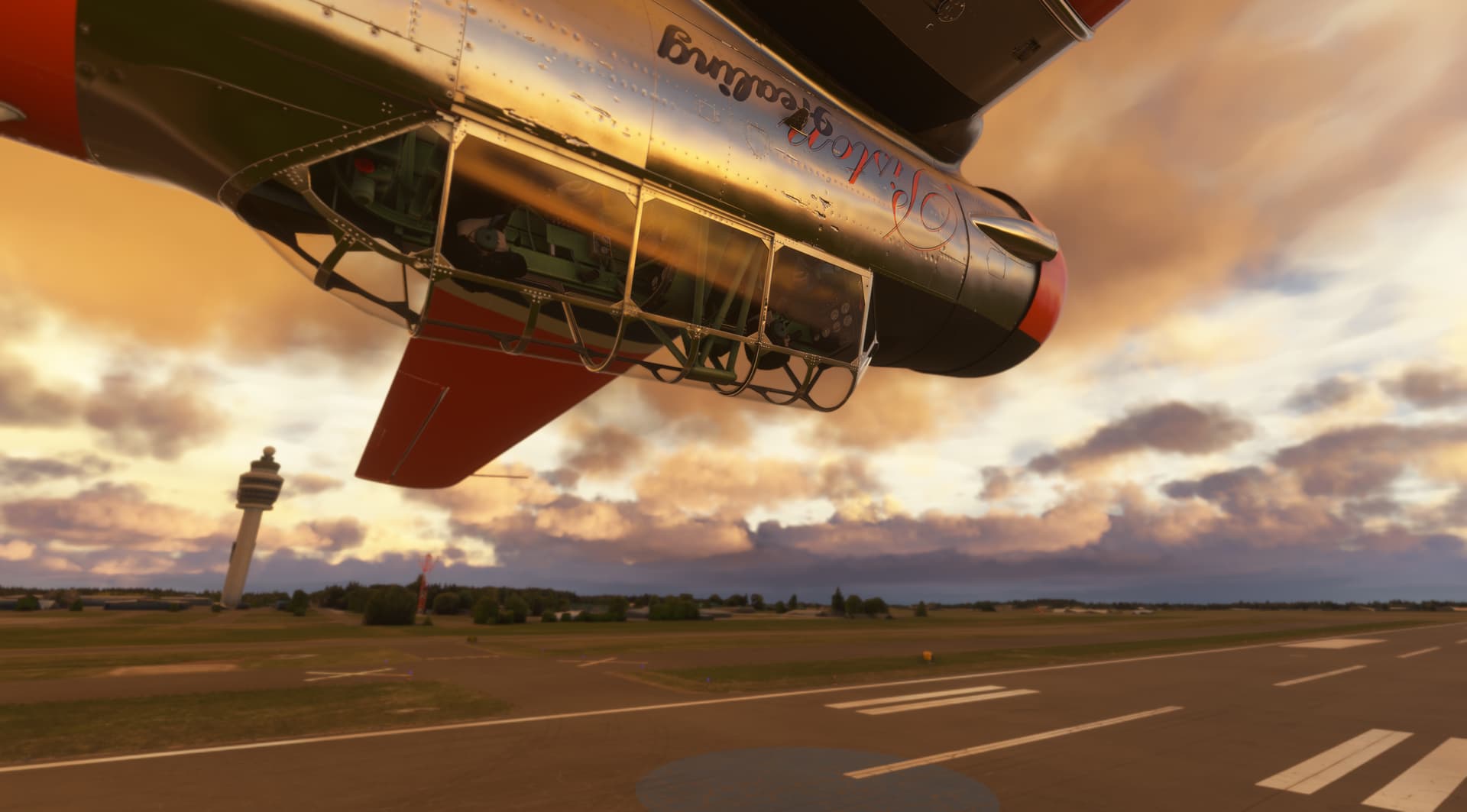
Control Feel & Precision
This is where the Flightdeck has to earn its stripes. For a simulator to be valuable to a pilot, it must allow precise, repeatable inputs with minimal dead zones or drift.
The hall-effect sensors on the stick and throttle are excellent. They’re smooth, wear-resistant, and offer high resolution. I could easily hold a climb at a specific pitch or maintain heading during an instrument approach with only fingertip inputs.
However, the stick centering spring feels a bit too stiff around neutral, with a noticeable detent. This can make fine corrections — like keeping a stabilized approach in gusty conditions — a touch harder than in the real world, where controls are loaded aerodynamically rather than by springs. Some users also report cross-axis coupling near center, where a slight pitch input introduces a bit of roll. It’s manageable with curve tuning but worth noting.
Throttle performance is strong. The adjustable detents are helpful for power management. In multi-engine sims, being able to split levers for engine-out practice or matched thrust is invaluable. The levers could benefit from slightly more friction or damping, but overall they’re satisfying to use.
Software & Customization
Turtle Beach provides the Flight Hangar companion app for Windows, which lets you calibrate axes, adjust dead zones, define detents, and map buttons. You can also configure RGB lighting (if that matters to you) and manage firmware updates.
Profiles per aircraft type are easy to create, which is critical — the way I map controls for a Cessna 172 (mixture, carb heat, flap settings) is very different from a twinjet or an F/A-18 in DCS. Axis curves can also be customized, which I recommend doing immediately. Flattening the center response curve made the stick feel more like a real yoke’s light touch around neutral.


Flying with the Flightdeck
Takeoffs & Climbs
The Flightdeck excels at throttle granularity. Smooth power application is easy, and trimming for climb is straightforward once you map the trim wheel. The stick’s stiffness does mean you have to hold a bit more backpressure during rotation than in reality, but it’s predictable.
Cruise & IFR Procedures
This is where the Flightdeck really shines for real pilots. Holding headings, making smooth turns, intercepting radials, and flying holds felt natural. The high sensor resolution and dual throttles make power management precise. If you’re practicing instrument approaches at home, this setup will serve you well.
Approaches & Landings
Landing highlights both the strengths and weaknesses of this rig. You can absolutely fly a stable approach, make throttle adjustments, and flare with good accuracy — but you’ll miss the aerodynamic feedback, stick shaker, and seat-of-the-pants cues that real aircraft provide. The stiffness around center sometimes made it harder to make the last-minute finesse corrections you’d make in real life.
Maneuvers & Emergencies
Practicing engine-out procedures, stalls, and steep turns is very doable. The ability to split throttles is great for simulating asymmetric thrust. But again, there’s no buffet or control pressure change as you approach the stall — you rely entirely on instruments and visual cues.
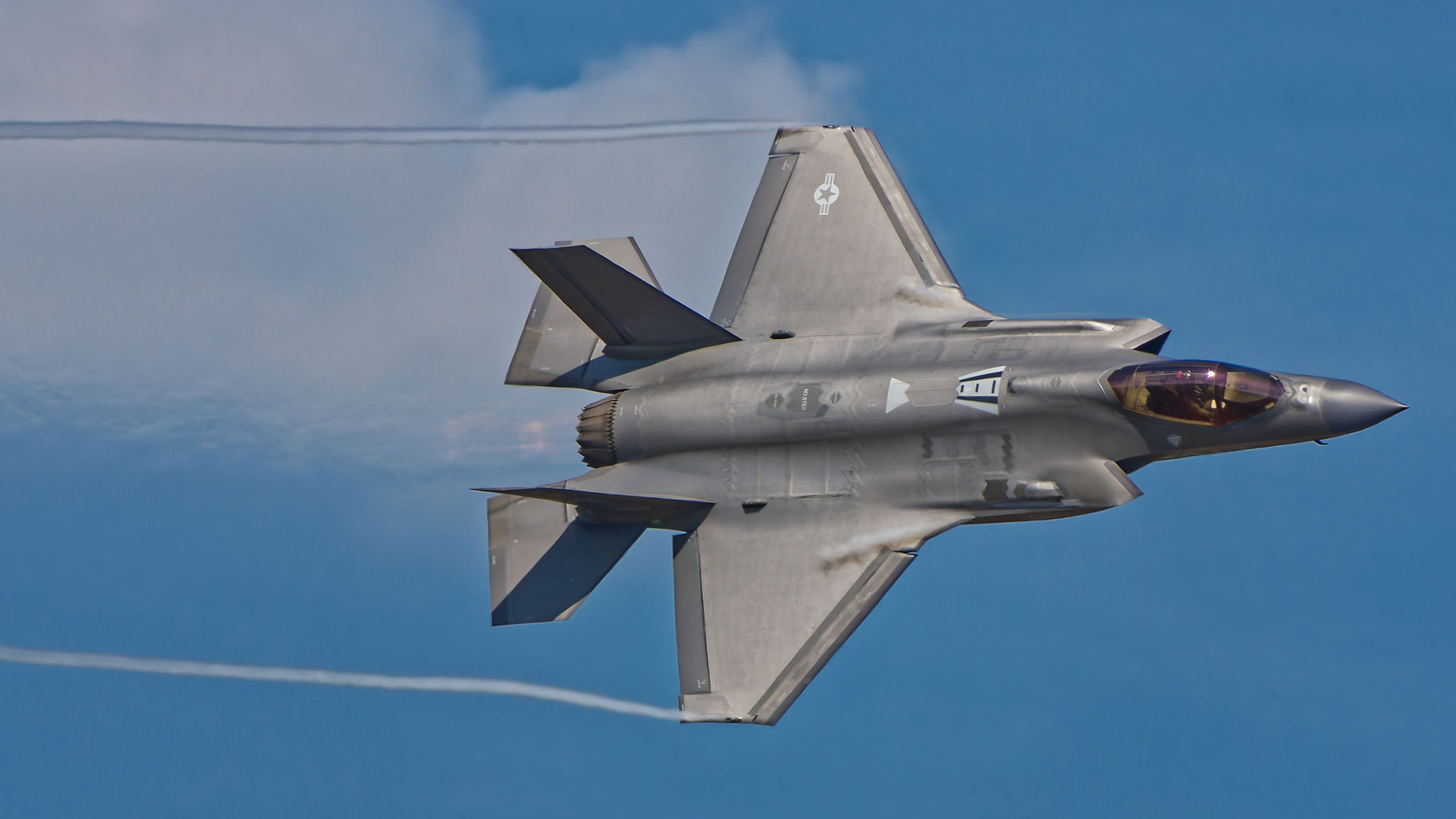
Strengths for Real Pilots
- Dual throttles with adjustable detents — Great for multi-engine practice and power management muscle memory.
- Excellent sensor precision — Makes holding attitudes and flying instrument procedures easier.
- Adjustable ergonomics — Stick height adjustment is a smart touch.
- Massive button count — Lets you map nearly every cockpit function and build realistic flows.
- Companion app and profiles — Customization helps replicate different aircraft types accurately.
Weaknesses & Limitations
- No force feedback — You won’t feel aerodynamic load changes, so control muscle memory isn’t fully transferable.
- Stiff center detent — Makes very fine corrections slightly harder than real flight.
- Build quality inconsistency — Some users report wobbly toggles or loose throttle play over time.
- Touchscreen usability — Useful for secondary tasks, but not ideal for high-workload flying.
- Price point — It’s a premium product; casual simmers might not benefit from its full feature set.
Bottom Line: Pilot’s Verdict
The Turtle Beach VelocityOne Flightdeck is one of the most capable consumer HOTAS setups I’ve used. Its precision, dual throttle design, and vast mapping options make it a strong tool for pilots who want to keep their procedural proficiency sharp at home.


It’s not a replacement for certified flight training devices or real flying — no desktop rig is — but it’s an excellent supplement. I’d happily use it to rehearse instrument procedures, run checklists, and practice multi-engine scenarios before heading to the airport.
For pilots and serious simmers, this is an 8/10 product. It’s not perfect, but it’s versatile, well-featured, and genuinely helpful if you take the time to configure it properly. For casual flyers, its price and complexity might be overkill — but if you’re building a serious home cockpit, it deserves a spot on your shortlist.

